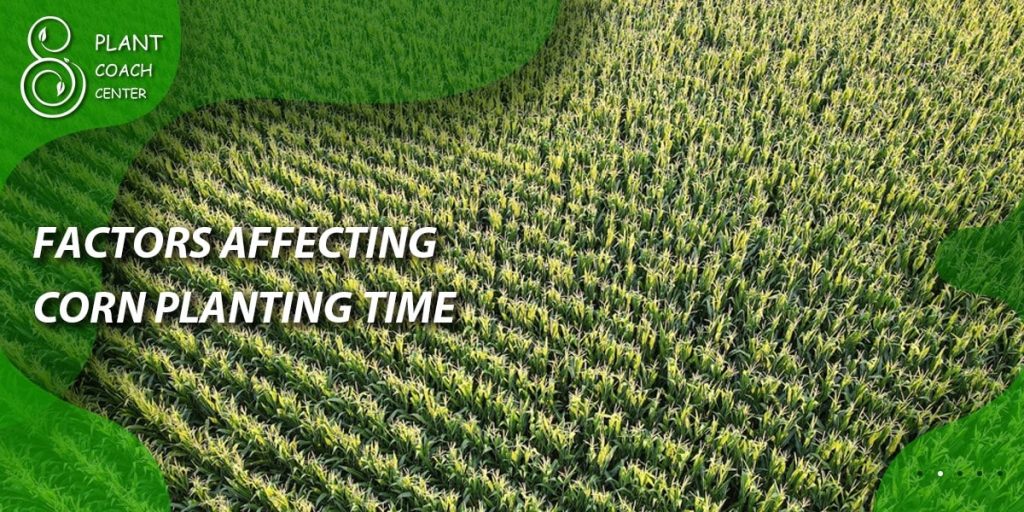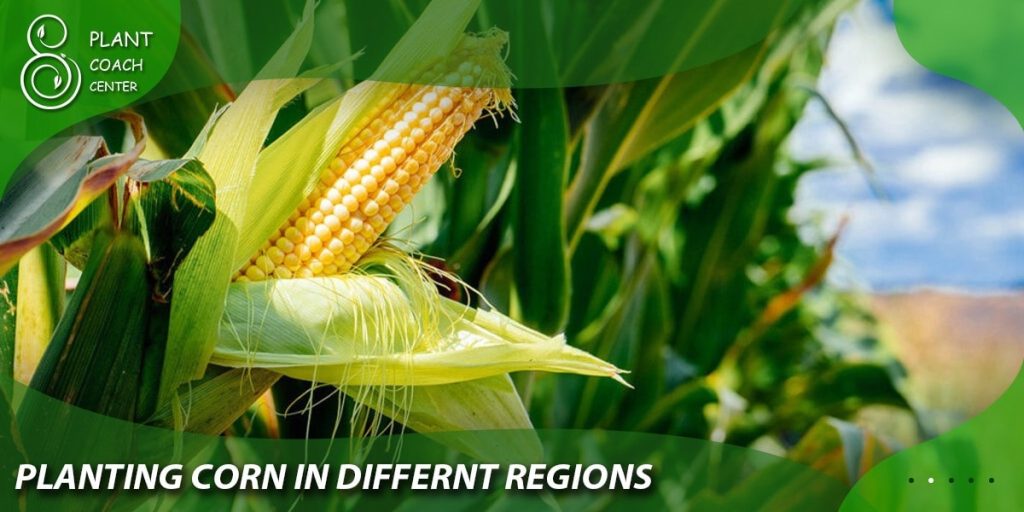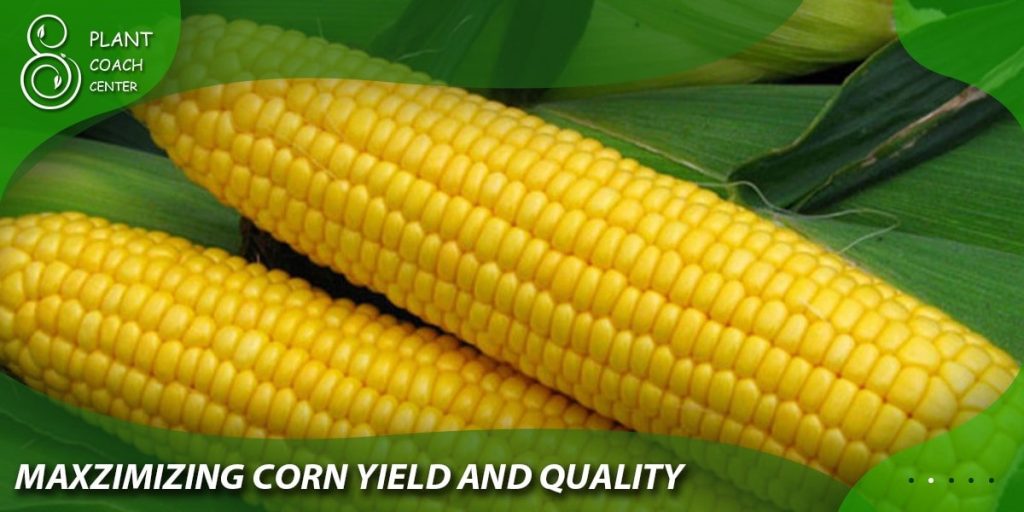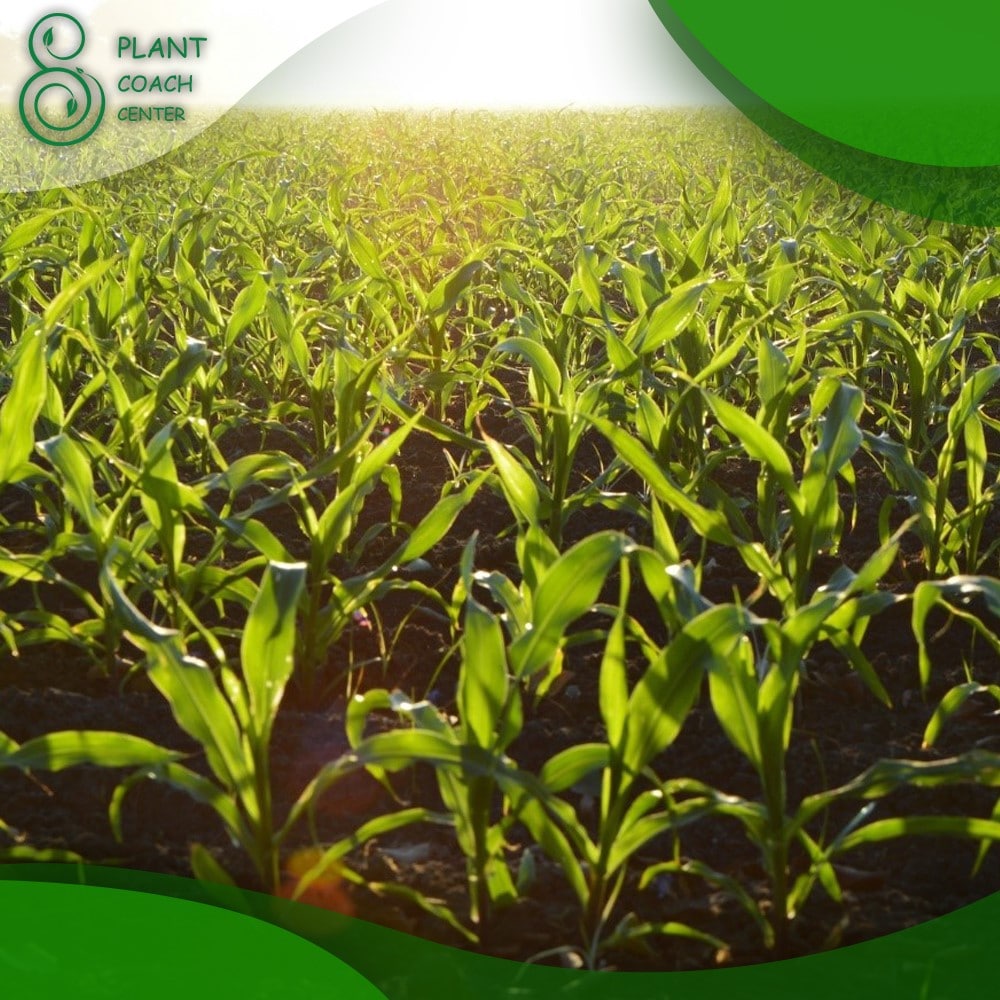When Can You Plant Corn
Corn is one of the most important and widely grown crops in the world, with a rich history and cultural significance in many societies.
Whether you’re a farmer, gardener, or enthusiast, planting corn can be a rewarding and challenging experience. However, to successfully grow corn, it’s essential to know when to plant it and how to prepare the soil and environment for optimal growth.
In this article, we’ll explore the factors that affect corn planting time, the best practices for determining the right time to plant, the common problems and solutions you may encounter during planting, and the strategies for maximizing corn yield and quality. By the end of this guide, you’ll have a comprehensive understanding of how to plant corn and achieve the best possible results.

Factors Affecting Corn Planting Time
Corn planting time depends on various factors that can vary from region to region and year to year. Here are some of the key factors that you should consider when deciding when to plant corn:
Climate and weather conditions
Climate and weather play a crucial role in corn growth and development, as they affect soil temperature, moisture, and nutrient availability. In general, corn requires warm and moist soil conditions to germinate and establish a healthy root system. The ideal soil temperature for corn planting is between 50 and 60 degrees Fahrenheit, although some varieties can tolerate slightly cooler or warmer temperatures.
However, weather conditions can vary widely depending on the region and season, and can affect the timing of corn planting. For example, if the spring is cold and wet, it may delay the planting season and increase the risk of soil compaction and disease. On the other hand, if the spring is warm and dry, it may allow for earlier planting but also increase the risk of drought stress and insect damage.
Soil temperature and moisture
Soil temperature and moisture are critical factors in determining when to plant corn. Corn seeds require adequate soil moisture to germinate, but excessive moisture can lead to poor seedling emergence and disease. Therefore, it’s important to wait until the soil has warmed up sufficiently and dried out enough to support healthy seedling growth.
To determine the soil temperature and moisture levels, you can use a soil thermometer and a soil moisture meter or test kit. The soil temperature should be at least 50 degrees Fahrenheit at a depth of 2 inches, and the soil moisture should be sufficient to support seedling growth but not waterlogged.
Corn variety and maturity group
The choice of corn variety and maturity group can also affect the planting time. Corn varieties can be classified into early, medium, and late maturity groups, depending on their growth rate and time to maturity. Early varieties require fewer growing days and can be planted earlier, while late varieties require more growing days and should be planted later.
The maturity group also depends on the region and climate, as some areas have longer growing seasons than others. For example, in the Midwest, where the growing season is longer, farmers can plant later-maturing varieties than in the South, where the growing season is shorter.
Planting equipment and techniques
Finally, the choice of planting equipment and techniques can affect the planting time and success. Planting equipment should be properly calibrated and maintained to ensure accurate seed placement and depth. The planting depth and spacing should also be adjusted based on the soil and weather conditions.
For example, in dry or compacted soils, you may need to plant the seeds deeper to reach moisture and avoid drying out. In wet or heavy soils, you may need to plant the seeds shallower to prevent drowning or compaction. Similarly, the spacing should be adjusted based on the expected yield and soil fertility, as well as the equipment’s capabilities.
Determining the Right Time to Plant Corn
Now that we’ve covered the factors that affect corn planting time, let’s explore the best practices for determining the right time to plant corn.
Best practices for assessing soil conditions
To determine if the soil is ready for planting, you can use several methods, including:
– Soil temperature and moisture measurements: As we mentioned earlier, use a soil thermometer and a soil moisture meter or test kit to check the soil temperature and moisture levels.
– Soil texture and structure: Soil texture and structure can affect the soil’s ability to retain moisture and nutrients. Sandy soils tend to dry out faster than clay soils, while compacted soils can limit root growth and nutrient uptake.
– Soil pH and nutrient levels: Soil pH and nutrient levels can also affect corn growth and development. Test the soil pH and nutrient levels before planting and adjust them if necessary.

Using weather forecasts and historical data
Weather forecasts and historical data can help you determine the optimal planting time based on the expected weather patterns and growing degree days (GDD). GDD is a measure of heat accumulation that can help predict the crop’s growth rate and maturity.
To calculate GDD, you need to know the daily maximum and minimum temperatures and subtract the base temperature (usually 50 degrees Fahrenheit) from the average temperature. For example, if the daily maximum temperature is 80 degrees Fahrenheit and the minimum temperature is 60 degrees Fahrenheit, the GDD for that day is 15 (80 + 60 / 2 – 50 = 15).
You can use GDD models to estimate the expected corn growth rate and maturity and adjust the planting time accordingly.
Considering local growing conditions and trends
Local growing conditions and trends can also affect the optimal planting time. For example, if your region has a history of early frost or drought, you may need to plant earlier or later than usual to avoid these risks.
You can also consult with local growers or extension agents to get advice on the best planting time based on their experience and knowledge of the local conditions.
Using growth stage models and decision support tools
Finally, you can use growth stage models and decision support tools to help you determine the optimal planting time and other management practices.
For example, the Corn Growing Degree Day Calculator developed by the University of Illinois can help you track the corn growth stages and predict the timing of important management practices, such as nutrient application and pest control.
Similarly, the Corn Planting Decision Tool developed by the University of Minnesota can help you determine the optimal planting date based on your location, soil type, and hybrid maturity.
By using these tools and methods, you can make informed decisions about when to plant corn and optimize the crop’s growth and yield potential.

Planting Corn in Different Regions
Corn planting time can vary depending on the region and climate. Let’s explore the optimal planting time for corn in different regions of the United States.
Corn planting time in the Midwest
The Midwest is the largest corn-producing region in the United States and has a longer growing season than other regions. In general, the optimal planting time for corn in the Midwest is between late April and mid-May, depending on the soil and weather conditions.
Early planting in the Midwest can increase the yield potential, but it also carries the risk of frost damage and disease. Late planting can reduce the yield potential, but it may be necessary in wet or cold soil conditions.
Corn planting time in the South
The South has a shorter growing season than the Midwest and is more prone to drought and heat stress. In general, the optimal planting time for corn in the South is between mid-March and early April, depending on the soil and weather conditions.
Early planting in the South can help avoid the summer heat and reduce the risk of drought stress, but it also carries the risk of frost damage and disease. Late planting can increase the risk of heat stress and reduce the yield potential.

Corn planting time in the Northeast
The Northeast has a shorter growing season than the Midwest and is more prone to wet and cold soil conditions. In general, the optimal planting time for corn in the Northeast is between mid-May and early June, depending on the soil and weather conditions.
Early planting in the Northeast can increase the risk of frost damage and disease, but it may be necessary to take advantage of the shorter growing season. Late planting can reduce the yield potential and increase the risk of fall frost damage.
Corn planting time in the West
The West has a diverse climate and soil conditions, ranging from arid deserts to coastal valleys. In general, the optimal planting time for corn in the West depends on the specific region and soil and weather conditions.
In arid regions, early planting is recommended to take advantage of the limited moisture and avoid the summer heat. In coastal regions, late planting may be necessary to avoid the cool and wet spring conditions.
By understanding the optimal planting time for corn in your region and adjusting your management practices accordingly, you can increase the yield potential and reduce the risk of crop failure.
Common Planting Problems and Solutions
Planting corn can be challenging, and several problems can arise during the planting process. Here are some common problems and solutions you may encounter during corn planting:
Delayed planting due to wet or cold soil
Delayed planting due to wet or cold soil can reduce the yield potential and increase the risk of disease and pests. To avoid delayed planting, you can use the following solutions:
– Improve soil drainage and structure: Use tillage practices and cover crops to improve soil structure and drainage.
– Use early maturing varieties: Use early maturing varieties that can tolerate cooler soil temperatures and grow faster.
– Use seed treatments: Use seed treatments that can protect the seeds from soil-borne diseases and pests.

Early planting risks and precautions
Early planting can increase the yield potential, but it also carries the risk of frost damage and disease. To minimize the risks of early planting, you can use the following precautions:
– Monitor soil and weather conditions: Monitor the soil temperature and moisture and the weather forecast to avoid exposing the seeds to frost or excessive moisture.
– Use protective measures: Use row covers, blankets, or other protective measures to protect the seeds from frost or wind damage.
– Use disease-resistant varieties: Use disease-resistant varieties that can tolerate early planting and reduce the risk of disease.
Pest and disease concerns during planting
Pests and diseases can damage the corn seeds and seedlings and reduce the yield potential. To prevent or control pests and diseases during planting, you can use the following strategies:
– Use integrated pest management (IPM) practices: Use IPM practices, such as crop rotation, pest-resistant varieties, and biological control, to reduce the reliance on pesticides.
– Use fungicides and insecticides: Use fungicides and insecticides when necessary to control the pests and diseases that can damage the seeds and seedlings.
– Monitor and scout regularly: Monitor the crops regularly and scout for signs of pests and diseases to detect and treat them early.
Managing crop rotation and soil health
Crop rotation and soil health can affect the corn growth and yield potential. To manage crop rotation and soil health, you can use the following practices:
– Use a diverse crop rotation: Use a diverse crop rotation that includes legumes, grasses, and other crops to improve soil fertility and structure.
– Use cover crops: Use cover crops that can improve soil health and reduce erosion.
– Use conservation tillage: Use conservation tillage practices that can reduce soil erosion and improve soil structure and organic matter.
By using these solutions and strategies, you can prevent or mitigate the common problems that can arise during corn planting and increase the crop’s yield potential and quality.
Maximizing Corn Yield and Quality
Maximizing corn yield and quality requires careful management practices throughout the growing season. Here are some strategies for achieving the best possible results:
Soil management
Soil management is critical to maximizing corn yield and quality. Here are some soil management practices to consider:
– Use soil testing: Test the soil regularly to determine the nutrient levels and adjust the fertilizer application accordingly.
– Use appropriate fertilizers: Use fertilizers that provide the necessary nutrients and micronutrients for optimal corn growth.
– Use precision agriculture: Use precision agriculture technologies, such as variable rate application and soil mapping, to optimize the fertilizer application based on the soil and crop needs.
– Use conservation practices: Use conservation practices, such as cover crops and conservation tillage, to improve soil health and structure.

Water management
Water management is also critical to maximizing corn yield and quality. Here are some water management practices to consider:
– Use irrigation: Use irrigation to provide the necessary water for corn growth, especially in regions with limited rainfall.
– Monitor soil moisture: Monitor the soil moisture regularly to avoid over or under watering.
– Use mulch: Use mulch to reduce water evaporation and maintain soil moisture.
– Use drought-tolerant varieties: Use drought-tolerant varieties that can tolerate dry soil conditions.
Pest and disease management
Pest and disease management is essential to maintaining the health and yield potential of corn. Here are some pest and disease management practices to consider:
– Use IPM practices: Use IPM practices to reduce the reliance on pesticides and minimize the impact on beneficial insects and the environment.
– Use resistant varieties: Use resistant varieties that can tolerate pests and diseases and reduce the need for pesticides.
– Monitor regularly: Monitor the crops regularly and scout for signs of pests and diseases to detect and treat them early.
– Use appropriate pesticides: Use pesticides that are effective against the target pests and diseases and have minimal impact on the environment and non-target organisms.
Harvest and post-harvest management
Harvest and post-harvest management are critical to maintaining the yield and quality of corn. Here are some harvest and post-harvest management practices to consider:
– Harvest at the right time: Harvest the corn at the right time to avoid yield losses and quality deterioration.
– Use appropriate harvesting equipment: Use appropriate harvesting equipment to minimize the damage to the corn kernels and cobs.
– Dry and store properly: Dry the corn to the appropriate moisture level and store it properly to prevent mold growth and insect infestation.
– Use appropriate storage facilities: Use appropriate storage facilities, such as silos and bins, to maintain the quality of the corn.
By using these strategies and practices, you can maximize the yield and quality of your corn crop and achieve the best possible results.
Conclusion
Corn is a valuable crop with a wide range of applications, from food and feed to fuel and industrial products. Maximizing the yield and quality of corn requires careful management practices throughout the growing season, from planting to harvest.
Determining the optimal planting time for corn depends on several factors, including soil temperature and moisture, weather patterns, and local growing conditions. By using appropriate tools and methods, you can make informed decisions about when to plant corn and optimize its growth and yield potential.
During the growing season, soil and water management, pest and disease management, and harvest and post-harvest management are critical to maintaining the health and yield potential of corn. By using appropriate practices and strategies, you can prevent or mitigate common problems and achieve the best possible results.
As with any agricultural crop, there are always new developments and innovations in corn production. By staying up-to-date with the latest research and best practices, you can continue to improve the yield and quality of your corn crop and contribute to the sustainable and efficient production of this valuable commodity.
How can I maximize corn yield and quality?
To maximize corn yield and quality, ensure proper soil preparation, provide adequate moisture, use recommended fertilizers, and control weeds and pests.
When is the best time to plant corn?
Plant corn when the soil temperature reaches around 50°F (10°C) and all risk of frost has passed. This is typically in late spring or early summer.
How can I control weeds in my corn field?
Use pre-emergent herbicides before planting, practice timely cultivation or mechanical weed control, and consider using herbicide-resistant corn hybrids.







